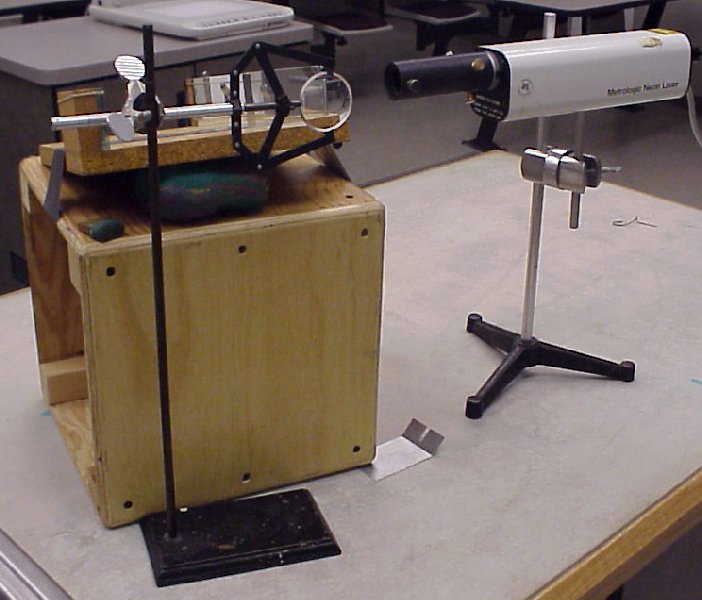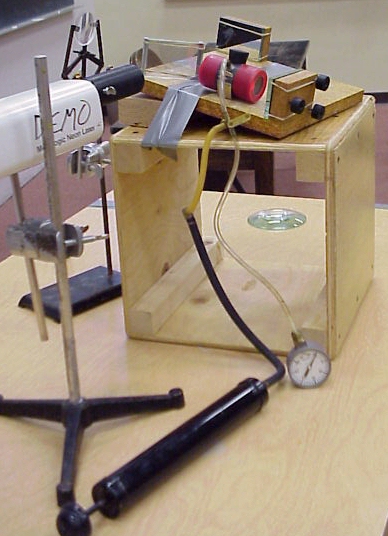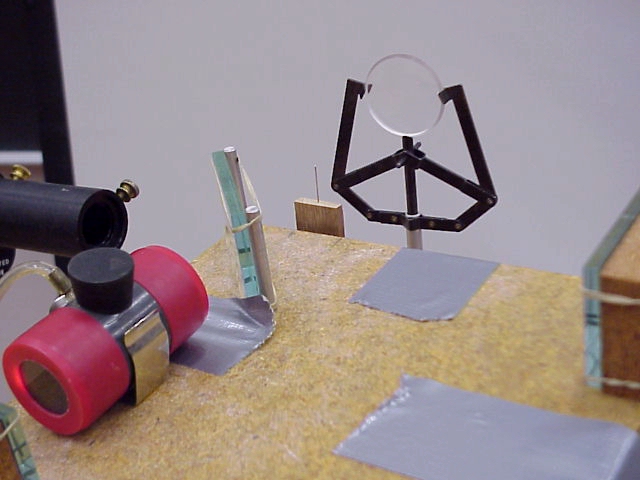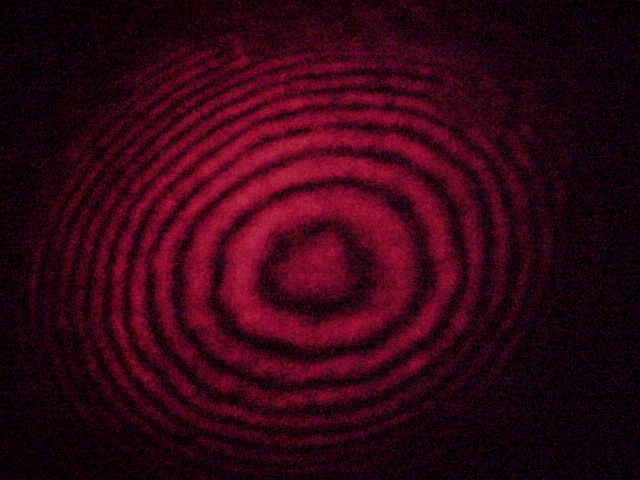Michelson Interferometer




PIRA 6D40.10
Mount the PSSC Michelson Interferometer so that the interference pattern is projected onto a screen or wall. A possible setup is shown at left. Use the Metrologic He-Ne Laser with the beam expander. A diverging lens helps to spread the final beam out to form a larger pattern on the screen. The room must be very dark for the pattern to be clearly visible to a large class. When positioning the laser, notice that the beam should shine through the piece of glass onto the fixed mirror. Align the laser such that you can see the laser light reflected from the surface of the glass near its center. To align the mirrors so that a pattern is produced, place an upright pin or thin nail in the path of the two final beams, as shown at top right. Two shadows of the pin will form, one for each beam. Adjust the alignment screws on the back of one mirror to precisely superimpose the two beams. The two pin shadows will be exactly on top of each other and indistinguishable when the beams are properly superimposed. The interference pattern show at bottom right should then be visible.
The slightest touch to the mirrors or mounting board will produce a clear change in the interference pattern. If one spot on the diffraction pattern shifts from a bright fringe to a dark fringe from such a touch, the mirror was moved by one-quarter wavelength, or apx. 160 nm. This is hard to touch that softly with a finger, but a touch with a piece of paper or foam will often work. The difference in wavelength between vacuum and air can be illustrated with the use of the red clip-on chamber with hand pump and gauge shown in the pictures below. Pump air out of the chamber, and adjust the needle valve to slowly let air back in. Fringes will shift in pattern. If enough air is pumped out of the chamber, and the number of fringes that shift are counted, the index of refraction of air can be calculated, provided the length of the chamber is known.
